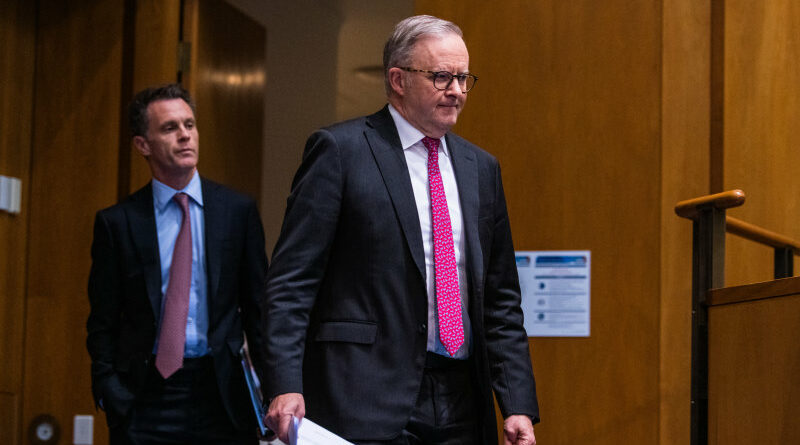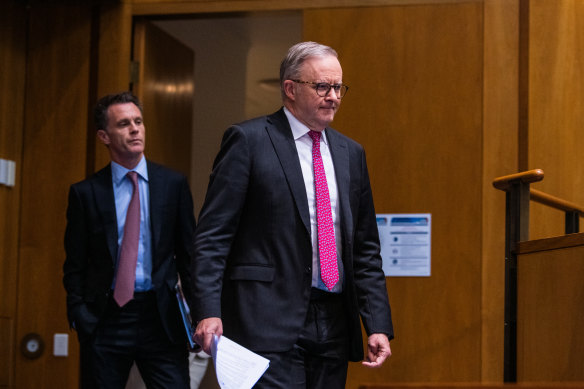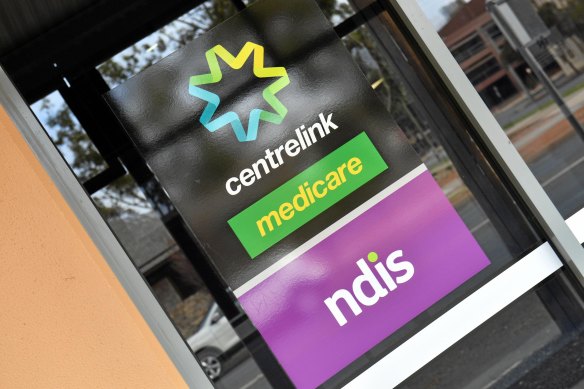Families to be diverted to new scheme to rein in NDIS costs
Save articles for later
Add articles to your saved list and come back to them any time.
Children with autism and developmental difficulties will receive support at school or in childcare centres under a new disability system that seeks to divert families from signing up to the burgeoning National Disability Insurance Scheme.
Prime Minister Anthony Albanese on Wednesday struck a deal with states to create a new system to deliver what they are calling “foundational supports” to Australians with a disability outside the $42 billion NDIS.
But in a major concession to get premiers over the line, Albanese said the Commonwealth would cover half the costs of delivering the new disability services through state education and health systems.
The state and federal governments will split the costs of a new disability system run through schools and childcare, to ease pressure on the NDIS.Credit: James Brickwood
The reforms have become a pressing issue for the federal government as the NDIS cements as one of its top budget pressures. Forecasts show it is on track to cost more than $100 billion within a decade as higher-than-forecast numbers of children join the scheme because their families can’t find help outside it.
The new system – which is yet to be designed or given a price tag – will cater to the roughly 20 per cent of Australian children who have learning difficulties, developmental concerns or disabilities so that their families don’t all need to turn to the NDIS for support.
About 9 per cent of Australian children aged five to seven are currently NDIS participants.
The foundational supports, which will operate in schools and childcare centres as well as other systems such as health, are the recommendation of an independent review of the $42 billion NDIS that will be published by its minister, Bill Shorten, on Thursday.
The review is also expected to tighten eligibility requirements so that a medical diagnosis alone is not enough to guarantee an NDIS package – a change that seeks to return the scheme to its original purpose of serving Australians with the most permanent and significant disabilities.
Albanese said legislation to that effect would be introduced in the first half of next year, but its implementation would be phased.
In an attempt to ease community anxiety, Albanese emphasised the reforms were not about kicking people off the scheme, which is still expected to grow at 8 per cent a year, but about making sure it would not buckle under its current annual growth trajectory – which has been exceeding 20 per cent.
“At the moment, NDIS funding is agreed by everyone, including the review, to be unsustainable,” Albanese said. “We want to [make sure] … that those people who need that support continue to get it. But for others, it might be that they don’t need the full NDIS scheme into the future.
“The NDIS at the moment, with its projections of where it was headed, was simply not sustainable. That’s something that’s recognised by the sector. [But] that doesn’t mean … any cuts. [We’re] talking about an 8 per cent growth target as well. That’s substantial for any area of social policy delivery.”
The Coalition’s NDIS spokesman, Michael Sukkar, said government messaging had been confused – particularly around its plans for eligibility – while few details were available on Wednesday.
“The government must be transparent about how many NDIS participants will have cuts made to their plans and how it intends to continue supporting these participants,” he said.
State premiers’ resistance to picking up extra disability services was overcome at Wednesday’s national cabinet meeting by a new deal on the GST and hospital funding, which they said would give their budgets certainty and enable them to take on extra responsibility. They are also off the hook for the full costs of providing disability support through their schools or health systems.
The federal government said it would split the cost of delivering foundational supports 50:50 with the states when a new funding agreement was negotiated, as well as capping additional state expenditure.
“The combination of the health costs and disability costs will see all states and territories better off,” Albanese said. “Discussions with the disability community will continue over the coming months as we work together to make the positive changes needed for people with disability.”
NDIS costs will continue to be shared by the states and Commonwealth – with the federal government on track to pay 70 per cent – although the states will pay a greater share from 2028 when a cap on the portion of growth they pay for is lifted from 4 to 8 per cent.
About 9 per cent of Australian children aged five to seven are currently NDIS participants.Credit: AAP
NSW Premier Chris Minns said hard work would now begin as he heralded a breakthrough on major policy challenges, while Victorian Premier Jacinta Allan said the national cabinet had agreed on “a reform agenda to fundamentally address some of the key issues that families rely on”.
The secretary of the Department of the Prime Minister and Cabinet and the secretaries of state premiers’ departments will oversee the design of the new system, while treasurers will cost the reforms.
School leaders have already said they could host support centres where speech pathologists, occupational therapists and psychologists work on site as an alternative to the individualised supports of the NDIS. But they have warned they need additional staff, resources and facilities to do so.
That challenge will be exacerbated by the fact that highest levels of NDIS takeup for children trend towards regional and disadvantaged parts of the country, where workforce issues are often more severe.
Cut through the noise of federal politics with news, views and expert analysis. Subscribers can sign up to our weekly Inside Politics newsletter.
Most Viewed in Politics
From our partners
Source: Read Full Article


